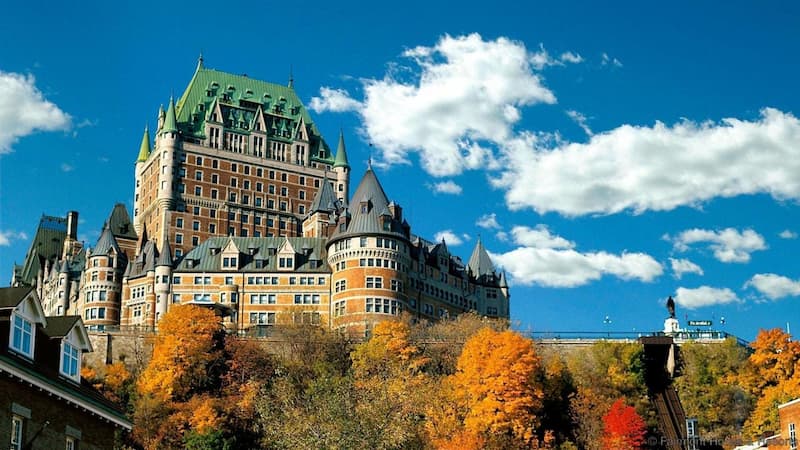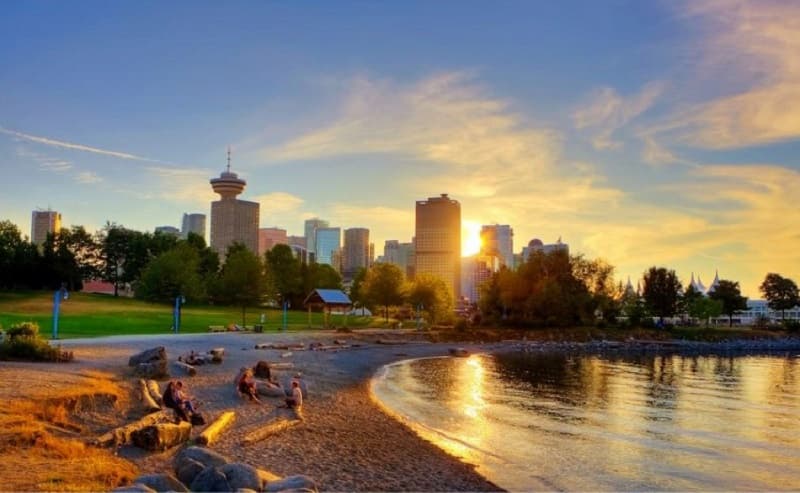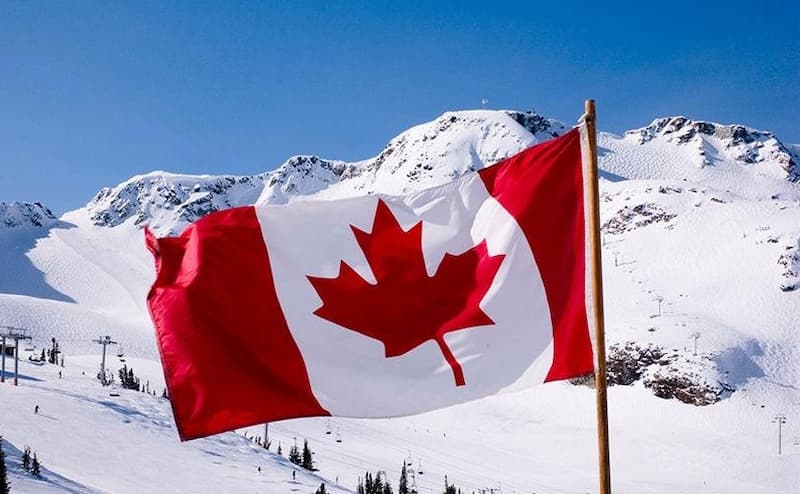Get free consultation
Fill out the form and we will contact you
With its vast territory, Canada’s weather varies from region to region, offering residents and visitors unique experiences. From harsh winters in the North to warm summers in major cities, the country's climate is always diverse and distinctive. Let’s explore more below.
Canada is the second-largest country in the world, stretching from the Atlantic Ocean in the east to the Pacific Ocean in the west and from the Arctic in the north to the U.S. border in the south. As a result, Canada’s weather is remarkably diverse, varying significantly from region to region.
Canada experiences four main seasons: spring, summer, fall, and winter. However, winters in Canada tend to last longer than summers, especially in areas closer to the Arctic.
Canada's weather is distinctly divided across four seasons
Winter in Canada is one of the most distinctive features of the country’s climate. With snowstorms and temperatures dropping as low as -40°C in some northern regions, Canadian winters can be a challenge for those unaccustomed to extreme cold. However, this season is also an ideal time for winter sports enthusiasts, offering activities such as skiing, ice skating, and even storm chasing.
In major cities like Toronto, Montreal, and Ottawa, snow blankets the streets, creating breathtaking scenery. However, this also means potential transportation difficulties, requiring residents to prepare thoroughly by wearing warm clothing and taking necessary precautions. Staying healthy and following safety measures while traveling in winter conditions is essential.
Summer in Canada typically lasts from June to September. However, due to the country's diverse climate from north to south, summer conditions vary significantly across different regions.
In southern areas such as Vancouver, Toronto, and Montreal, summer temperatures range from 20°C to 30°C, creating a pleasant and comfortable atmosphere. These regions attract many tourists during the summer, offering outdoor activities like picnicking, sightseeing, and vibrant cultural festivals.
Meanwhile, in northern Canada, summers are relatively short, with temperatures rarely exceeding 20°C. Regions like Yukon and the Northwest Territories seldom experience scorching hot days. Instead, they offer cool, refreshing weather—perfect for outdoor adventures and nature exploration.
Summers in Canada have a pleasant temperature ranging from 20°C to 30°C
Spring and autumn in Canada are transitional seasons between winter and summer. In spring, as the snow begins to melt, temperatures gradually rise, though unexpected snowstorms can still occur.
Trees start to bud, and cities and towns become vibrant with blooming flowers. This is an ideal time for outdoor activities such as hiking, cycling, and camping.
Autumn, on the other hand, is the season of falling leaves, when Canada’s forests transform from green to stunning shades of yellow, red, and orange. It’s the perfect time to admire breathtaking scenery, participate in fall festivals, and enjoy seasonal treats like apple pies and fresh apple cider.
With its vast territory, Canada experiences significant climate variations across different regions.
Vancouver, located on Canada’s west coast, has the mildest climate in the country. Winters in Vancouver are not too cold, and summers are not too hot.
However, this region is quite wet, with high rainfall throughout the fall and winter seasons. Vancouver is an ideal destination for outdoor activities such as hiking, trekking, and exploring famous national parks like Stanley Park and Grouse Mountain.
The weather in Vancouver, Canada, is the mildest in the country
Toronto, the capital of Ontario, has a humid continental climate with cold winters and hot, humid summers. Winter temperatures in Toronto can range from -10°C to -20°C, with occasional snowstorms.
During summer, temperatures can reach 30°C or higher, especially on sweltering days. However, Toronto offers numerous entertainment and cultural attractions, such as visiting the CN Tower, exploring museums, and attending major festivals.
Montreal, located in Quebec, experiences a harsh continental climate with frigid winters and warm summers, characteristic of Canada’s weather. Winters in Montreal are particularly cold, with heavy snowfall and temperatures dropping below -20°C.
Despite this, the city is famous for its winter festivals and outdoor sports. In summer, temperatures can reach 30°C, making it an excellent time to enjoy cultural events like music festivals and explore Montreal’s diverse culinary scene.
Northern Canada, which includes regions such as Yukon, the Northwest Territories, and Nunavut, has an extremely cold climate, with long winters and temperatures that can drop to -40°C or lower. Summers here are short, with temperatures ranging from 10°C to 20°C. However, Northern Canada is an ideal destination for those who love exploring the wilderness, engaging in activities like hunting and fishing, or witnessing the breathtaking Northern Lights phenomenon.
Northern Canada has an extremely cold climate
Besides its geographical location, Canada’s weather is influenced by several other factors, including:
Ocean Currents: The tropical Gulf Stream brings warm air to southern regions of Canada, making summers hotter in these areas.
Topography: Mountain ranges like the Rockies create climate variations between regions close to and far from the mountains. Areas near mountains tend to have cooler climates, while those farther away experience more extreme weather conditions.
Proximity to the Arctic: Northern regions such as Yukon and the Northwest Territories have extremely cold climates, with long winters and short summers.
If You Plan to Visit Canada, Summer is the Best Season
You have now explored the unique features of Canada’s weather with Quoctichthuhai.com. If you are looking for opportunities to invest in Canadian citizenship, contact Quoctichthuhai.com. We offer legal second citizenship investment programs and global golden visas.
Fill out the form and we will contact you





